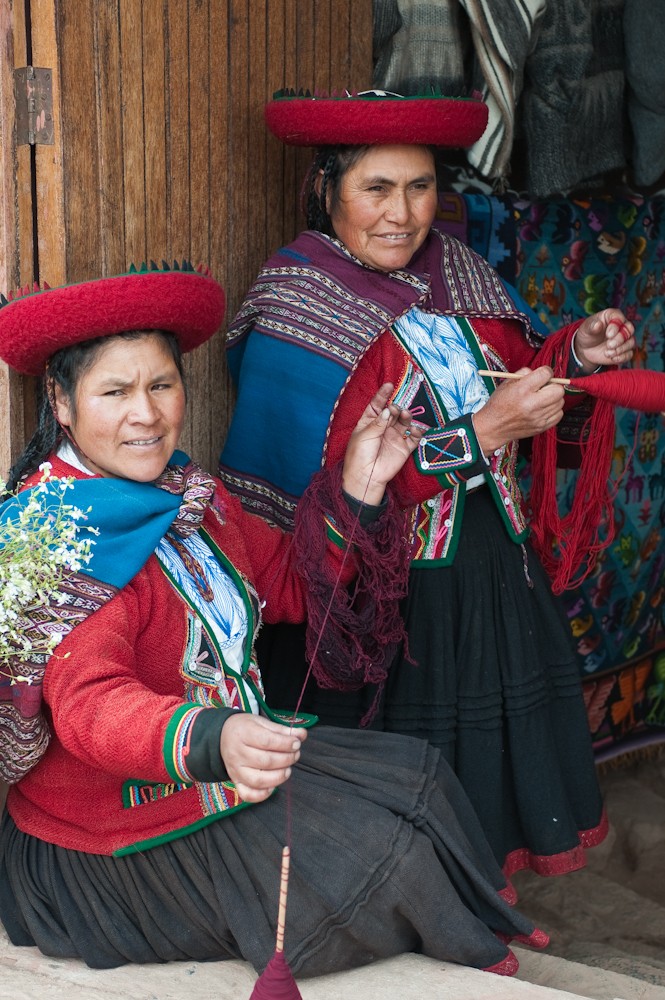
Portraits tell stories that landscapes can’t. Whether haunting or heart-warming, here’s how to put a face on a destination
My most memorable experience on a recent trip to Peru was not Machu Picchu or the beautiful rugged mountains, but the time I spent with the amazing Uru people, who live on the floating reed islands on Lake Titicaca. I spent two hours photographing the women in their colourful dresses and simphanas (pompoms in their braided hair). The stark contrast between the drab, monotone huts and their vibrant costumes was both philosophically and photographically compelling.

Each year, in my photography workshops and seminars, I review dozens of travel portfolios packed with hundreds of images of sweeping landscapes, wispy waterfalls, mouth-watering food and impressive ancient ruins. Unfortunately, I don’t see many people shots. And that’s too bad because the single most defining characteristic of any region is its culture, and few things define culture better than people.

So why don’t we shoot more people portraits when we travel? First off, most of us are terrified of approaching a stranger and asking if we can take their picture, and second, good portraits are more technically challenging than landscapes or ruins. Good people shots require a ton of patience.
The biggest hurdle in photographing people is getting them to stop moving long enough for you to get a well-composed shot. Most of the people we meet in our travels are busy with their daily lives and getting them to stand still for a portrait is difficult. Further complicating our task are language barriers, superstitious beliefs, skin tones, a person’s attire and their surroundings. All issues that test our ability to get good portraits.
After 20 years of shooting in some 80 countries I have learned that most people don’t mind having their picture taken. A polite smile and a few friendly words work wonders in establishing a rapport with your subject. So instead of trying to “sneak” shots, learn a couple of local greetings then move in close to get an intimate portrait.
Images of people looking directly into the camera, if done incorrectly, can accentuate round faces and produce that deer-in-the-headlights look. A good tip is to have your subject turn their head slightly away from the camera. Then, try to keep the tip of her nose within her outer cheek line.

It’s always best to photograph people in shade, especially those with dark skin, but I didn’t have that luxury on a floating island devoid of trees. So I positioned my subjects with the sun at their backs and used a bit of fill flash to brighten their faces. It took a couple of tries to get the exposure right, but my guide helped with instructions and conversation to relax the women.
Good travel portfolios should include a selection of traditional close-up and environmental portraits. For traditional portraits remember to shoot vertical, fill the frame and don’t place the subject’s face in the centre of the frame (use the rule of thirds). Environmental portraits work best when you include enough surroundings to connect the subject with his world. Too much surroundings can be distracting, though, so play around with the composition.
I try to have fun with everyone I photograph. I even let some of the Uru women take my picture. Of course this produced many laughs, and nothing spices up a portrait better than a smiling face.

Tips For Better Portraits
- Try to shoot subjects in open shade, in a doorway or when the sun is low. To avoid that squinting look, never pose subjects facing the sun.

- Crop tightly and try to use a shallow depth of field (f4 or f5.6 aperture) to blur distracting backgrounds.
- Check the background for posts or poles. Posts that appear to grow out of a subject’s head or shoulder have ruined many good portraits.
- Don’t shoot down on people––it can make them look small. Shoot level or from slightly below the level of their face. This is especially important when photographing children (get down to their level).

- Ask about local customs before shooting. People in some countries believe that cameras capture their souls.
- Grab shots are okay if asking permission will spoil the moment, but be cautious, you may get your shot at the expense of upsetting someone. We travel to learn, not to upset people.
- Imagine that your viewfinder is divided into a grid of thirds (two vertical and two horizontal lines). Try to place your subject’s eyes near one of those intersections.
Take Your Portraits Up A Notch
Wide-angle lenses can distort faces (camel nose) and long telephotos tend to flatten faces, so invest in a medium-range zoom (70 to110mm focal lengths). Most point-and-shoots include this range and DSLR zoom lenses that include this range run from about $300 to $500.


